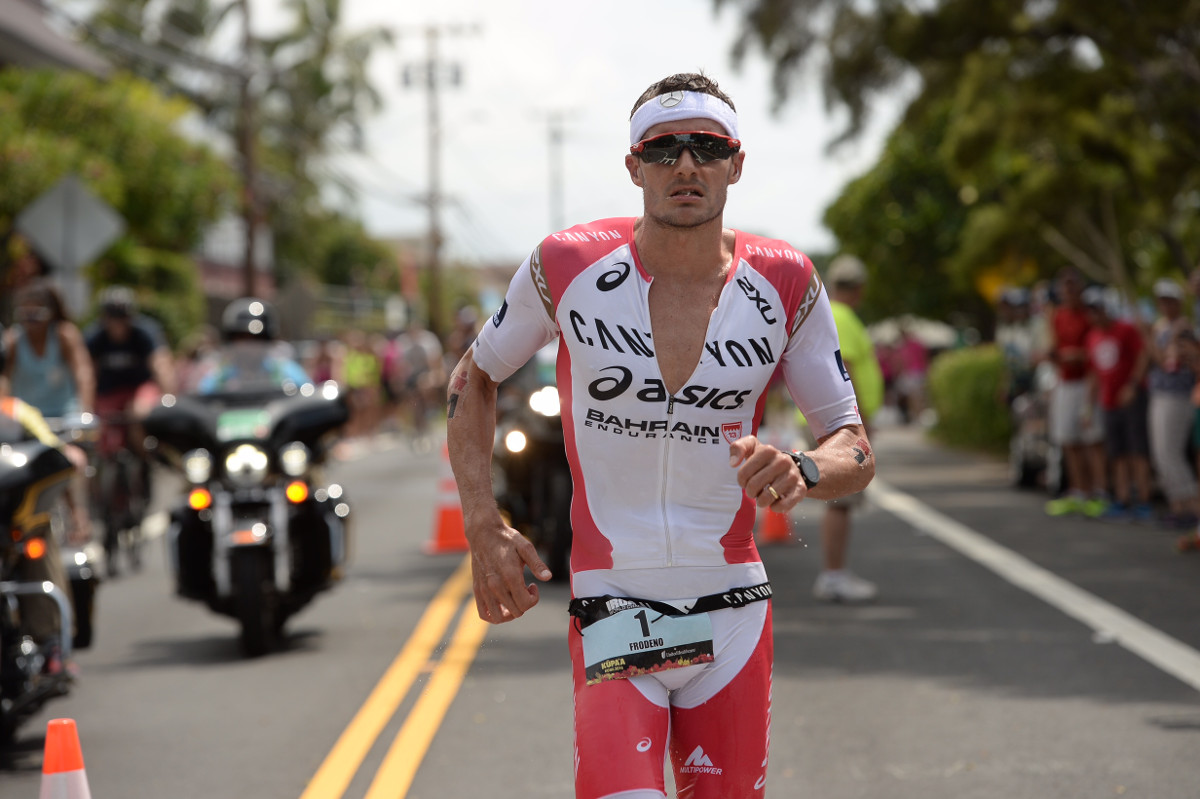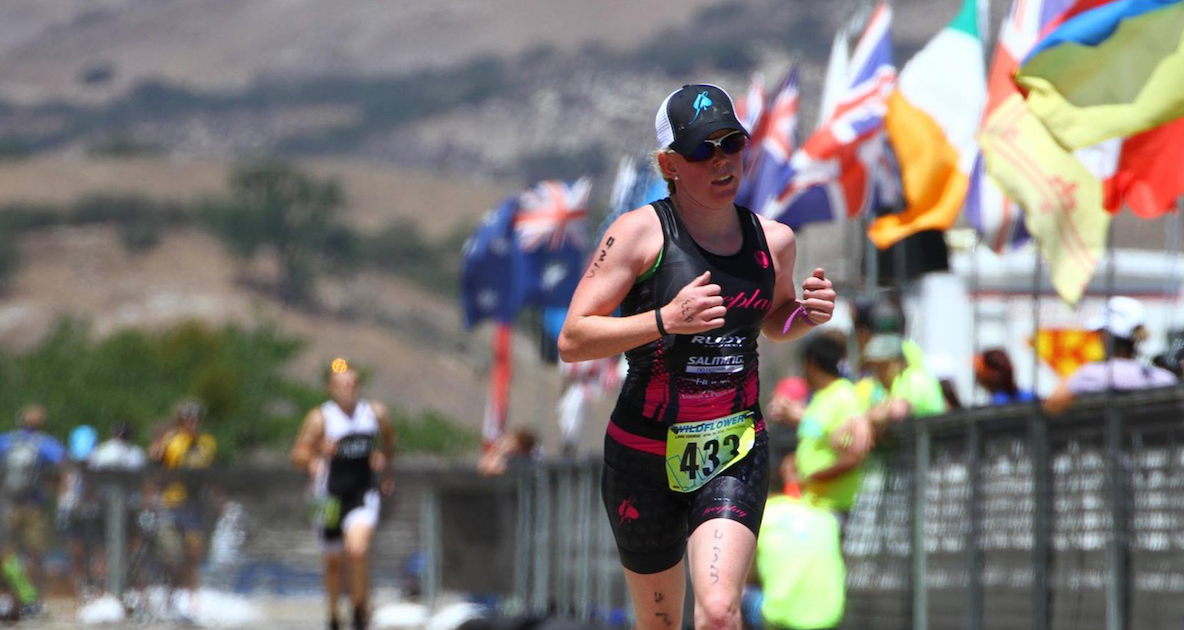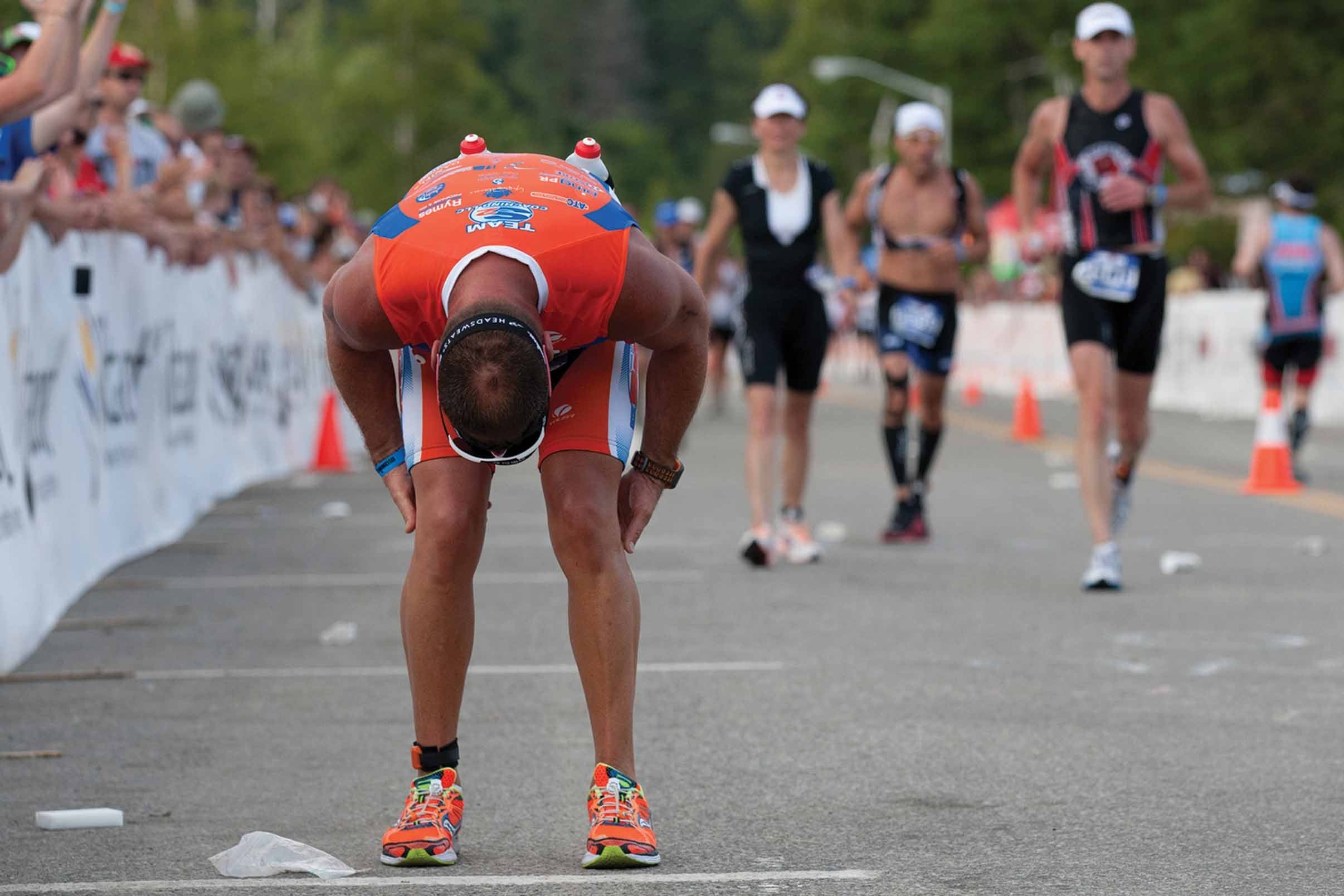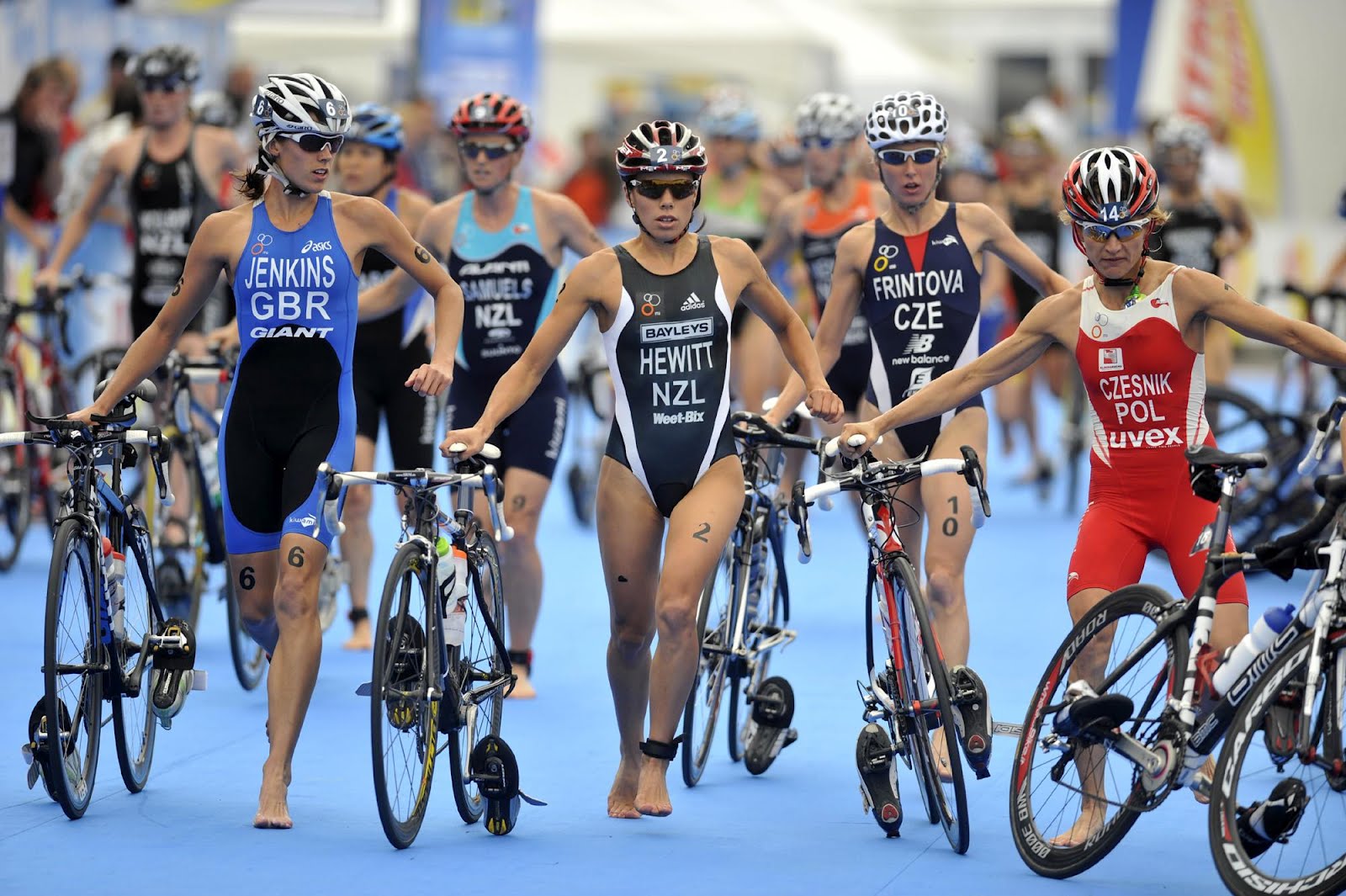Home>Misc>Featured>How Much Weight Do Stagnant Women Lose When Training For Triathlon


Featured
How Much Weight Do Stagnant Women Lose When Training For Triathlon
Modified: January 2, 2024
Discover how much weight stagnant women can lose when they commit to training for a triathlon with our featured program, designed to help you achieve your fitness goals.
Introduction
Training for a triathlon is a challenging and rewarding endeavor that requires dedication, determination, and discipline. It involves a combination of endurance running, cycling, and swimming, pushing athletes to their physical and mental limits. While the primary goal of triathlon training is to improve athletic performance, many women also wonder how much weight they can expect to lose throughout the process.
Losing weight while training for a triathlon is not guaranteed for everyone. Weight loss depends on various factors, including the starting weight, body composition, individual metabolism, and training intensity. However, many stagnant women who undertake triathlon training experience significant weight loss alongside improvements in their overall fitness.
This article will delve into the topic of weight loss during training for a triathlon, specifically focusing on stagnant women. Stagnant women refer to those who have been leading a sedentary lifestyle and have limited experience with regular exercise. We will explore the factors that contribute to weight loss in this specific group and highlight the importance of proper nutrition during the training process. Additionally, we will provide a sample training plan tailored for stagnant women and showcase real-life case studies of individuals who have successfully lost weight while training for a triathlon.
Whether you are a stagnant woman considering triathlon training or simply curious about the potential weight loss outcomes, this article will provide you with valuable insights and practical guidance to help you achieve your goals. So, let’s dive in and discover the fascinating journey of weight loss for stagnant women during triathlon training!
Background: Training for Triathlon
A triathlon is a multisport endurance event that typically involves swimming, cycling, and running, in that order, with various distances depending on the specific race. It is a grueling test of stamina, endurance, and mental strength, requiring athletes to push themselves to their limits in each discipline.
Training for a triathlon is a comprehensive process that involves structured workouts and dedicated preparation in each of the three sports. Athletes spend hours in the pool perfecting their swim technique, logging miles on the bike to build strength and stamina, and hitting the pavement for long-distance runs to improve endurance.
Triathlon training usually follows a periodization model, where athletes progressively increase the intensity and duration of their workouts over time, with strategically placed rest and recovery periods. This allows the body to adapt to the training stimulus and become more resilient, ultimately improving overall performance.
Triathlon training not only helps athletes improve their cardiovascular fitness but also strengthens their muscles and builds mental fortitude. The intensity and variety of the training sessions challenge the body in different ways, leading to improved physical fitness and increased calorie expenditure.
A common misconception is that triathlon training is only for seasoned athletes or those who are already fit. However, anyone with the commitment and determination to put in the effort can train for a triathlon and reap the benefits. Many women, especially those who have been leading a sedentary lifestyle, find triathlon training to be a catalyst for positive change in their health and fitness journey.
While the primary goal of triathlon training is to improve athletic performance and complete the race, many women also discover the added benefit of weight loss. The combination of cardiovascular exercise, strength training, and increased calorie expenditure from intense workouts can lead to significant weight loss and improved body composition.
Next, we will explore the topic of weight loss during triathlon training in stagnant women, highlighting the factors that influence weight loss outcomes and the importance of proper nutrition in supporting this process.
Weight Loss during Training for Triathlon
Weight loss can be a common outcome for women who engage in triathlon training, particularly for those who were previously leading a sedentary lifestyle. The combination of intense cardiovascular exercise, strength training, and an increased overall energy expenditure can lead to significant changes in body composition.
When training for a triathlon, the body is put through a series of rigorous workouts that demand high levels of energy. Endurance running, cycling, and swimming all contribute to the burning of calories and the development of lean muscle mass. As a result, stagnant women often experience a decrease in body fat percentage and an increase in muscle tone.
One of the primary factors contributing to weight loss during triathlon training is the overall increase in calorie expenditure. The body requires more energy to fuel the intense workouts, and this can lead to a calorie deficit, which is a necessary condition for weight loss. The energy deficit created by the training sessions, coupled with a well-balanced nutrition plan, can contribute to the shedding of excess pounds.
Another reason for weight loss during triathlon training is the development of lean muscle mass. Endurance training, such as cycling and running, helps to strengthen and tone the muscles. As muscles are denser than fat, an increase in muscle mass can lead to a decrease in overall body weight. However, it is essential to note that muscle weighs more than fat, so the number on the scale may not always be an accurate representation of progress. Measuring body fat percentage and noting changes in physical appearance can be more reliable indicators of weight loss during triathlon training.
It is important to recognize that weight loss during triathlon training is not guaranteed for everyone. Each individual’s body composition and metabolism vary, and weight loss outcomes may differ accordingly. Factors such as genetics, hormonal balance, and dietary habits can all influence the rate and extent of weight loss.
Additionally, it is crucial to approach weight loss during triathlon training with a balanced mindset. The primary focus should be on overall health and fitness rather than solely on the number on the scale. Triathlon training offers numerous benefits beyond weight loss, including improved cardiovascular health, enhanced endurance, increased strength, and mental resilience.
In the next section, we will explore the specific factors that can affect weight loss in stagnant women during triathlon training and discuss the importance of proper nutrition in supporting their weight loss journey.
Factors Affecting Weight Loss in Stagnant Women
When it comes to weight loss during triathlon training, stagnant women may encounter unique challenges and factors that can influence their progress. Understanding these factors can help women make informed decisions and optimize their weight loss journey. Here are some key factors that can affect weight loss in stagnant women:
- Starting Weight and Body Composition: The starting weight and body composition play a significant role in determining the potential for weight loss. Generally, those with a higher body fat percentage or excess weight may experience more noticeable changes in weight and body composition during triathlon training.
- Metabolism: Women with a faster metabolism tend to burn calories more efficiently and may experience more rapid weight loss. However, it’s important to note that metabolism is influenced by various factors such as genetics, age, hormone levels, and overall fitness level.
- Training Intensity and Duration: The intensity and duration of training sessions can impact weight loss outcomes. Higher intensity workouts tend to burn more calories during and after the session, while longer duration sessions contribute to overall energy expenditure.
- Rest and Recovery: A well-balanced training plan includes rest and recovery periods to allow the body to repair and adapt. These periods are crucial for weight loss as they promote muscle growth and prevent overtraining, both of which contribute to increased metabolic rate and calorie burning.
- Nutrition: Proper nutrition is essential for weight loss during triathlon training. A balanced diet that provides adequate fuel for training sessions, supports muscle growth and repair, and helps create a calorie deficit is key. Women should focus on consuming a variety of nutrient-dense foods, including lean proteins, whole grains, fruits, vegetables, and healthy fats.
- Hydration: Staying well-hydrated is crucial for overall health and weight loss. Drinking enough water helps regulate metabolism, aids in digestion, and can help prevent overeating by reducing feelings of hunger.
- Consistency and Compliance: Consistency in training and adherence to the training plan are essential for achieving weight loss goals. Stagnant women who commit to regular exercise and follow a structured training schedule are more likely to experience positive weight loss outcomes.
It’s important to remember that weight loss is a gradual process, and individual results may vary. It’s best to focus on making sustainable lifestyle changes and embracing a balanced approach to training and nutrition. Consulting with a healthcare professional or a registered dietitian can also provide personalized guidance and support throughout the weight loss journey.
In the next section, we will explore the crucial role of nutrition in supporting weight loss for stagnant women during triathlon training and provide a sample training plan tailored for this specific group.
Importance of Nutrition in Weight Loss
Nutrition plays a crucial role in the weight loss journey for stagnant women during triathlon training. Proper fueling and nourishment are essential for supporting training sessions, promoting muscle growth and repair, and creating a calorie deficit necessary for weight loss. Here are some key reasons why nutrition is important:
- Fueling Workouts: Adequate nutrition ensures that the body has enough energy to fuel intense training sessions. Consuming a balanced meal or snack containing carbohydrates and proteins before exercise can enhance performance and prevent the breakdown of muscle tissue.
- Creating a Calorie Deficit: Weight loss requires creating a calorie deficit, where the body burns more calories than it consumes. This is achieved by consuming fewer calories through a controlled diet and increasing overall energy expenditure through exercise. A combination of portion control, balanced macronutrient distribution, and mindful eating can help create and maintain a calorie deficit.
- Muscle Growth and Repair: Triathlon training puts stress on the muscles, and proper nutrition is vital for recovery and growth. Consuming enough protein supports muscle repair and growth, which can increase overall metabolism and contribute to weight loss in the long run. Including lean proteins such as chicken, fish, tofu, or legumes in meals and snacks is beneficial.
- Metabolism Support: Certain nutrients, such as vitamins, minerals, and antioxidants, support metabolic functions in the body. A well-balanced diet rich in fruits, vegetables, whole grains, and healthy fats enables the body to function optimally, which can enhance weight loss outcomes.
- Satiety and Hunger Control: A well-planned diet that includes fiber-rich foods, such as fruits, vegetables, and whole grains, can promote satiety and prevent overeating. These foods contribute to feelings of fullness, reducing the likelihood of consuming excess calories.
- Hydration: Adequate hydration is crucial for overall health and weight loss. Water helps maintain proper digestion, supports metabolic functions, and can aid in managing hunger cravings. Staying hydrated throughout the day is essential for optimal training and weight loss.
- Mental and Emotional Well-being: Proper nutrition can also positively impact mental and emotional well-being, which is important for sustainable weight loss. Consuming nutrient-dense foods and avoiding processed, sugary foods can help stabilize mood, reduce stress, and provide a sense of overall well-being.
When it comes to nutrition during triathlon training, it’s essential to focus on balance, variety, and moderation. Prioritizing whole foods, including lean proteins, fruits, vegetables, whole grains, and healthy fats, can help provide the necessary nutrients for optimal performance and weight loss.
In the next section, we will provide a sample training plan for stagnant women to help them kickstart their weight loss journey during triathlon training.
Sample Training Plan for Stagnant Women
A well-structured training plan is essential for stagnant women looking to lose weight during triathlon training. This sample training plan provides a general outline that can be adapted based on individual fitness levels and goals. Remember to consult with a healthcare professional or a certified coach before starting any new exercise routine. Here is a sample training plan:
Week 1-4: Building Endurance
- Swimming: Start with two to three swim sessions per week. Begin with 20-30 minutes of continuous swimming and gradually increase the duration to 45 minutes.
- Cycling: Begin with two cycling sessions per week, starting with 30 minutes of moderate-intensity cycling and gradually increasing the duration to one hour.
- Running: Incorporate two run sessions per week, starting with a combination of walking and jogging for 20-30 minutes and gradually increasing the duration to 45 minutes.
- Strength Training: Include two strength training sessions per week, focusing on exercises targeting major muscle groups. Aim for 8-12 repetitions per exercise.
Week 5-8: Intensity and Progression
- Swimming: Increase the intensity and duration of swim sessions to incorporate intervals and drills. Aim for three swim sessions per week.
- Cycling: Introduce hill training and intervals to challenge cardiovascular fitness and increase strength. Aim for three cycling sessions per week.
- Running: Incorporate speed work and longer runs to build endurance. Aim for three run sessions per week.
- Strength Training: Continue with two strength training sessions per week, gradually increasing the intensity and weight load.
Week 9-12: Race Preparation
- Swimming: Focus on refining swimming technique and building speed. Maintain three swim sessions per week.
- Cycling: Increase the duration and intensity of cycling sessions to simulate race conditions. Aim for three cycling sessions per week.
- Running: Incorporate longer runs and practice transitions between cycling and running. Aim for three run sessions per week.
- Brick Workouts: Integrate brick workouts, which involve combining two disciplines in a single session (e.g., cycling immediately followed by running).
It’s important to individualize the training plan based on fitness level, available time, and specific goals. Gradually increase the duration and intensity of workouts to avoid overtraining and minimize the risk of injury. Incorporating rest days and allowing time for recovery is crucial for optimal progress and overall well-being.
Remember, this is just a general sample plan. Adjustments can be made based on personal preferences and specific needs. It is recommended to consult with a coach or seek guidance from a certified professional to create a more personalized plan.
In the next section, we will showcase real-life case studies of stagnant women who have successfully lost weight during triathlon training, providing inspiration and motivation for others.
Case Studies: Weight Loss of Stagnant Women during Triathlon Training
Real-life case studies of stagnant women who have undergone triathlon training and experienced significant weight loss serve as inspiration for others. These stories highlight the transformative power of triathlon training and the potential for positive changes in both physical fitness and body composition. Let’s explore a few case studies:
Case Study 1: Sarah
Sarah, a 38-year-old stagnant woman with a sedentary lifestyle, decided to take on the challenge of training for a triathlon to improve her overall health. Over the course of six months, Sarah followed a well-structured training plan and made dietary changes to support her weight loss goals. Through consistent effort and dedication, she lost 25 pounds and significantly reduced her body fat percentage. Not only did Sarah complete her first triathlon, but she also gained confidence, improved her cardiovascular fitness, and developed a lifelong passion for a healthy and active lifestyle.
Case Study 2: Lisa
Lisa, a 45-year-old stagnant woman with a busy schedule and a history of weight gain, embarked on a triathlon training journey as a means to lose weight and reclaim her fitness. With a combination of regular swim, bike, and run sessions, Lisa gradually shed 30 pounds during her six-month training period. The training not only helped her achieve her weight loss goals but also positively impacted her mental well-being, as she found a new sense of energy, confidence, and self-esteem.
Case Study 3: Emily
Emily, a 28-year-old stagnant woman who had recently given birth, desired to shed the extra weight she gained during pregnancy. With the support of a coach, she tailored a triathlon training plan to fit her postpartum needs. Through consistent training, including swimming, cycling, and running, along with a balanced diet, Emily lost 20 pounds in four months. The training not only helped her lose weight but also provided her with renewed strength, improved endurance, and a heightened sense of accomplishment as she completed her first triathlon.
These case studies illustrate how stagnant women can achieve impressive weight loss results through triathlon training. However, it’s important to note that individual outcomes may vary depending on factors such as starting weight, body composition, metabolism, and adherence to the training plan. Each journey is unique, and the overarching goal should be overall health, fitness, and personal growth.
By showcasing these case studies, we hope to inspire and motivate other stagnant women to embark on their own triathlon training journey, knowing that weight loss and transformative changes are within reach with dedication, perseverance, and a balanced approach.
In the next section, we will conclude our article with a brief summary of the key takeaways and the importance of embracing a healthy and sustainable approach to weight loss during triathlon training.
Conclusion
Training for a triathlon is an incredible journey that can lead to not only improved athletic performance but also significant weight loss for stagnant women. The combination of endurance running, cycling, and swimming, along with proper nutrition, can contribute to positive changes in body composition and overall fitness.
Throughout this article, we explored the various factors that can impact weight loss during triathlon training, including starting weight, metabolism, training intensity, and nutrition. We highlighted the importance of a well-balanced diet, proper fueling, and hydration to support training sessions and create a calorie deficit for weight loss.
Moreover, we provided a sample training plan tailored for stagnant women, emphasizing the importance of gradual progression, rest, and recovery to optimize results and prevent injury. We also showcased real-life case studies of stagnant women who successfully lost weight during triathlon training, demonstrating the transformative potential of this endeavor.
It is crucial to approach weight loss during triathlon training with a balanced mindset, focusing on overall health, fitness, and personal growth. Celebrate the small victories and progress made on the journey, both on and off the scale.
If you are a stagnant woman considering triathlon training, remember that everyone’s journey is unique, and results may vary. Seek guidance from professionals, such as coaches or registered dietitians, to personalize your training plan and ensure a safe and effective weight loss journey.
Finally, be patient and kind to yourself. Triathlon training is a challenging but rewarding experience, and with dedication, determination, and the right support, you can achieve your weight loss and fitness goals while embracing a healthier, more active lifestyle.









